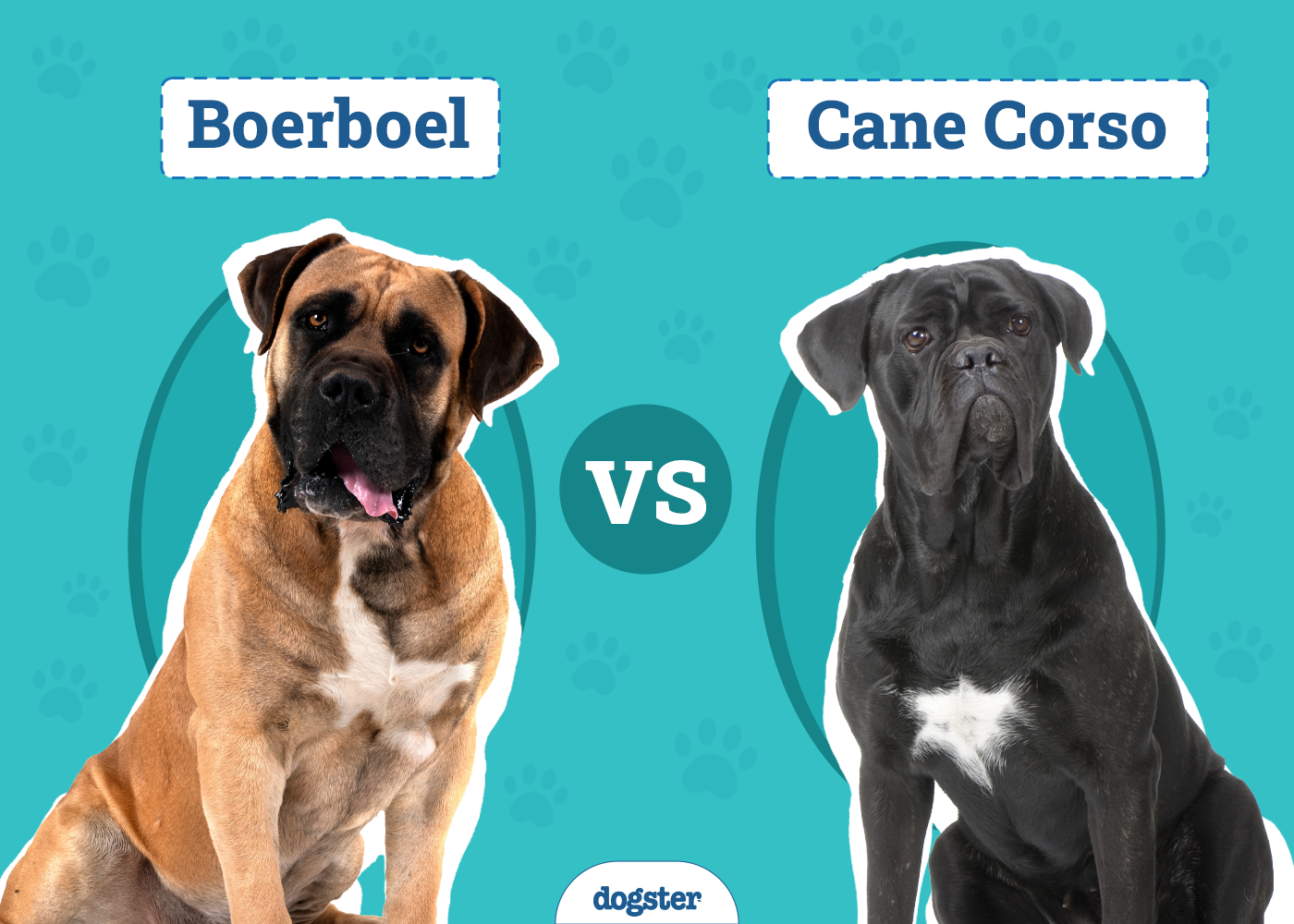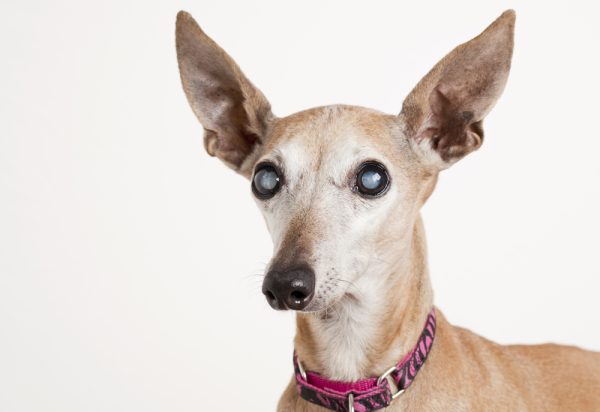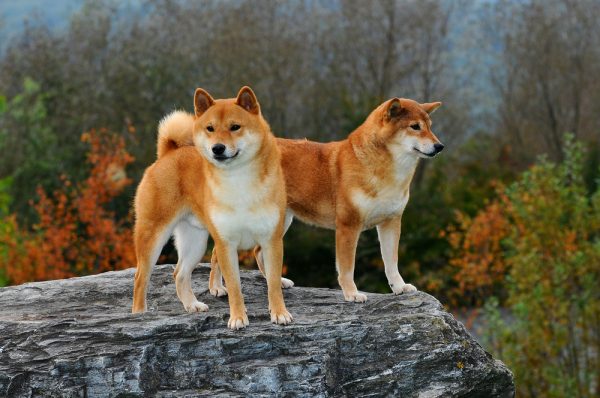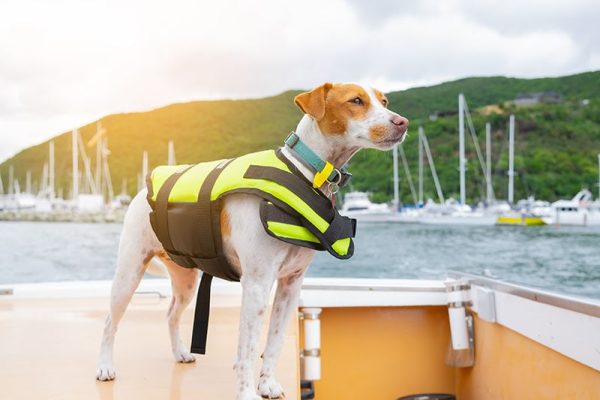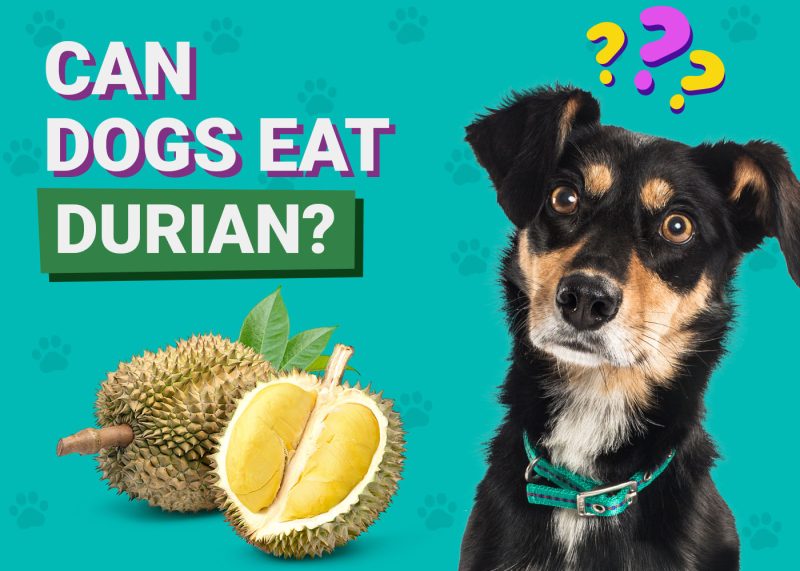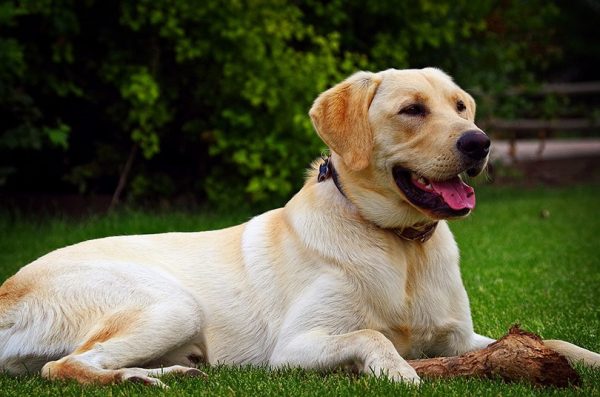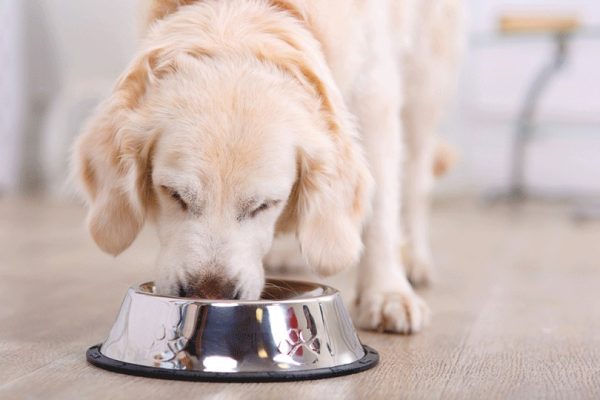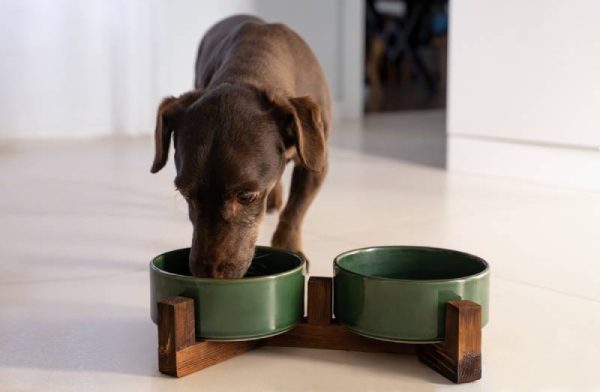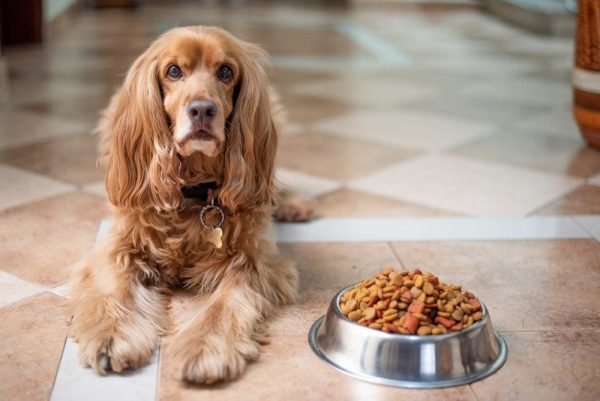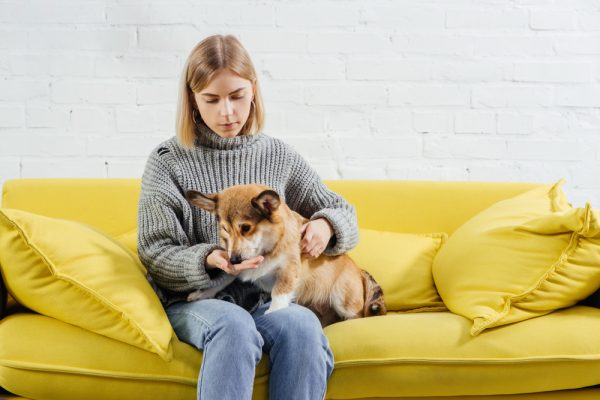In this article
View 3 More +Boerboels and Cane Corsos are two massive breeds of dogs. They were both originally bred as working dogs, and both retain some of the characteristics of working dogs. However, despite these similarities, the two are quite different in a lot of ways, as well.
For a start, the two hail from different parts of the world. Whereas the Boerboel tends to be quite a serious dog, the Cane Corso can be more playful. And, physically, the Cane Corso looks more muscular and has more of a rectangular face.
Below, we take a closer look at both of these huge dog breeds and look at some of the differences between the two, so that you can determine which, if either, of these breeds, is right for you and your family home.

Visual Differences
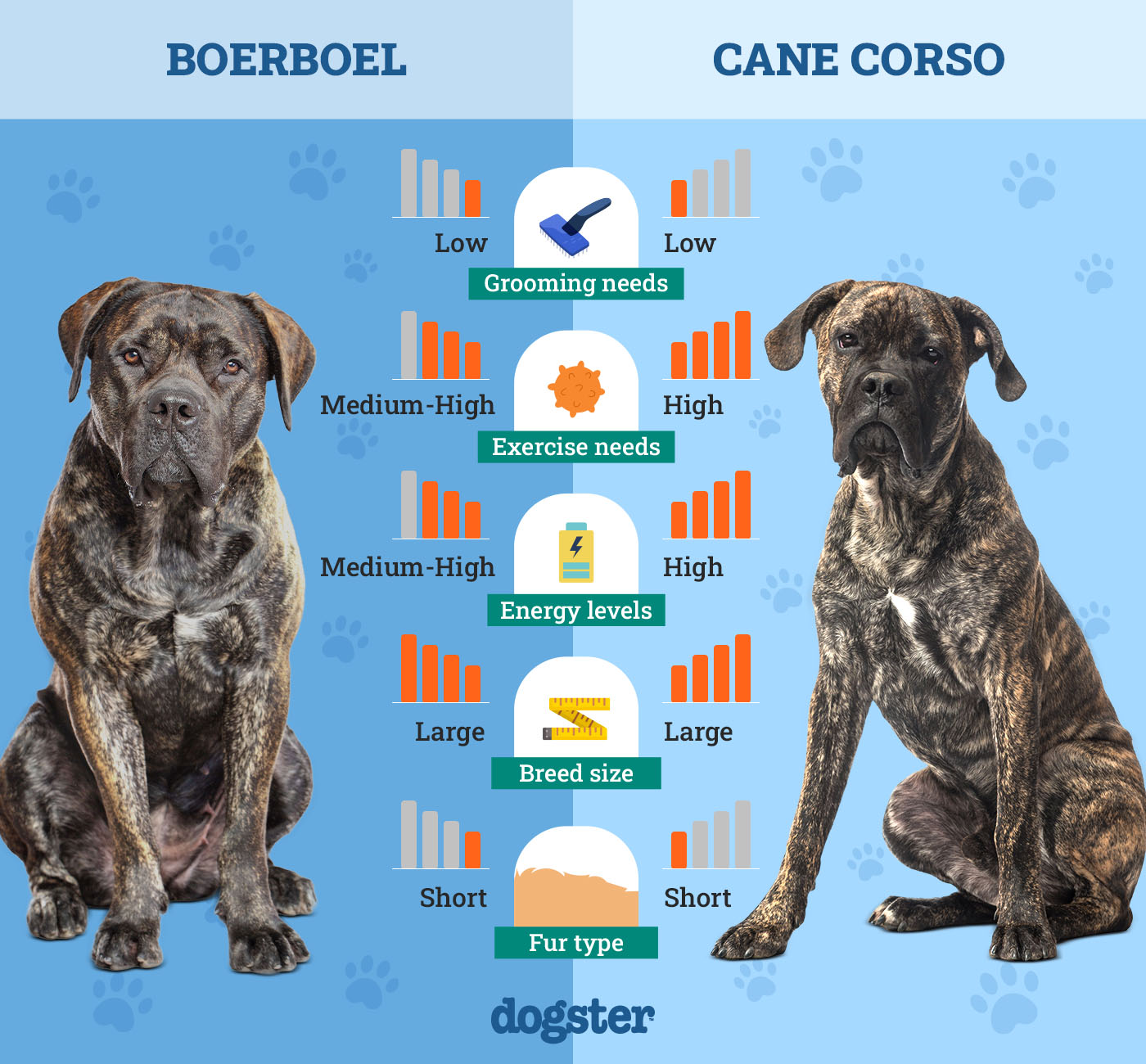
At a Glance
- Average height (adult): 22–27 inches
- Average weight (adult): 150–200 pounds
- Lifespan: 10–12 years
- Exercise: 1+ hours a day
- Grooming needs: Easy
- Family-friendly: Yes
- Other pet-friendly: Possibly, with gradual and careful introduction
- Trainability: Intelligent but can be a challenge to train
- Average height (adult): 23–28 inches
- Average weight (adult): 90–110 pounds
- Lifespan: 10–12 years
- Exercise: 2+ hours a day
- Grooming needs: Easy
- Family-friendly: Usually
- Other pet-friendly: When introduced as a puppy
- Trainability: Intelligent and will usually take well to positive training

Boerboel Dog Breed Overview
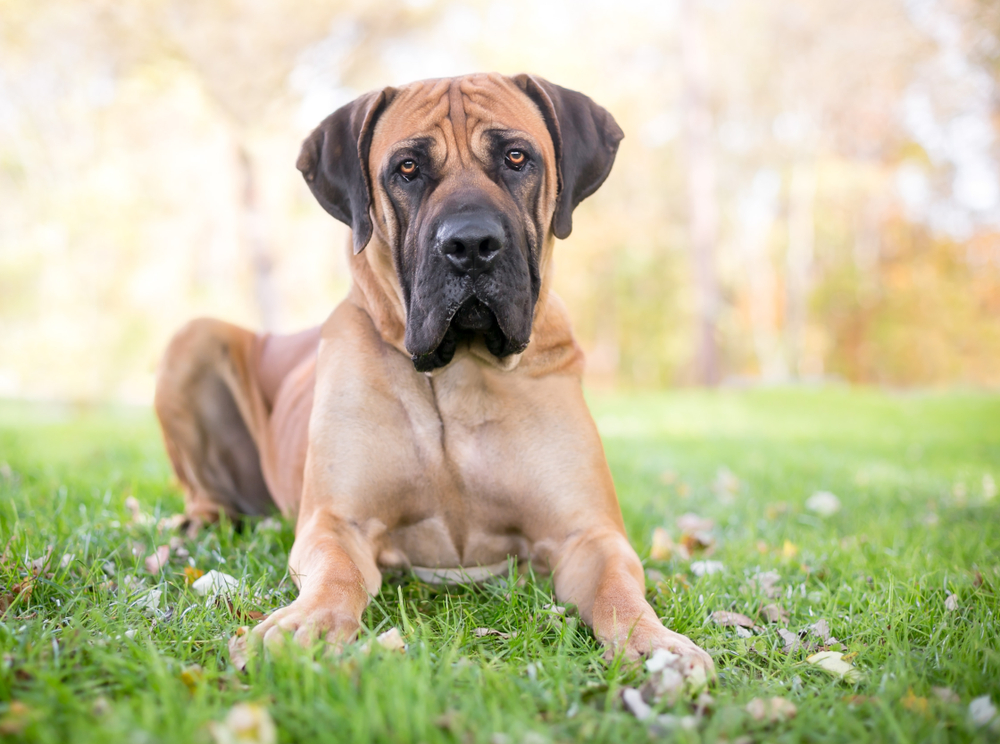
Boerboels are South African Mastiffs that were introduced to South Africa by the Dutch in the 17th Century. The name Boerboel means “farmer dog” and the breed was first used to protect farms. Specifically, it was bred to protect against large animals including baboons and even lions. In the 20th Century, the breed was bred with other, typically smaller dogs, and it lost some of its stature. However, in the 1980s, enthusiasts started to breed the original, pure breed. As a result of their work, the breed became very popular in South Africa once again and its popularity spread somewhat into other countries.
Physical Attributes
The most obvious physical attribute of the Boerboel is its size. Although it is much shorter, the breed can reach the same weight as a Great Dane, with some Boerboels achieving 200 pounds or potentially even more. Otherwise, the breed shares most of its physical appearance with other Mastiff breeds. Although it is a muscular, strong dog, it usually has rolls of fat and is typically seen with a docked tail.
Personality / Character
Despite its intimidating size and history, the Boerboel is considered a playful and lively dog. It enjoys playing and is happy when being given a physical task to complete. It will get along with family children, although its massive size means that care must always be taken when letting children and Boerboels play together. The breed must have early training and socialization, otherwise, it can become territorial and somewhat aggressive. When it comes to sharing the house, the Boerboel is a hunter, which can make introducing it to other animals a challenge. The breed is especially known to have the potential to be aggressive with other Boerboels of the same gender.
Training
Training is very important with this breed, and it should be started when the Boerboel is young and impressionable. Training should use positive reinforcement and never be harsh. Harsh training techniques may have the opposite effect. Because the Boerboel was bred to independently guard livestock, it can be an independent dog and this makes training somewhat difficult, especially for first-time dog owners. Enroll in puppy training classes and consider taking part in canine sports, including agility but more likely more physically demanding sports.
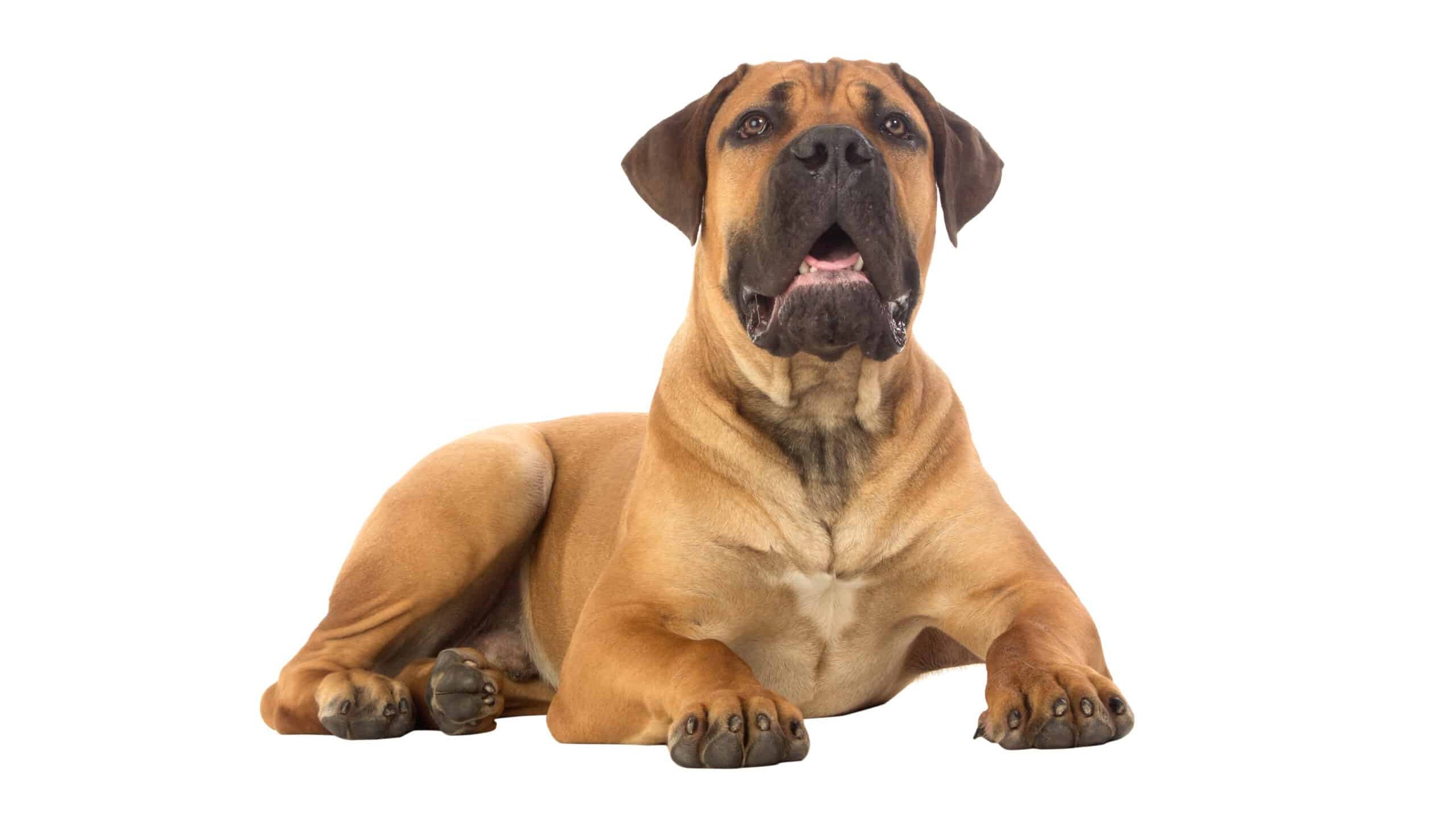
Health & Care
The breed is known to be healthy and hardy, with few hereditary predispositions. However, its size does mean that the Boerboel is prone to hip and elbow dysplasia as well as heart disease. And the drooping eyelids also mean that the breed is prone to conditions of the eyelid. When it comes to maintenance care, the short coat is easy to manage and the Boerboel is considered low maintenance. Do check the ears often and ensure that nails are clipped and teeth brushed regularly.
Suitable For:
Experienced owners that are looking for a working dog or are willing to expend time taking part in working exercises and canine sports.
- Low maintenance
- Hardy and healthy breed
- Fun and lively dog that is good with family
- Can be difficult around other Boerboels of the same gender
- Massive size means accidents do happen

Cane Corso Dog Breed Overview
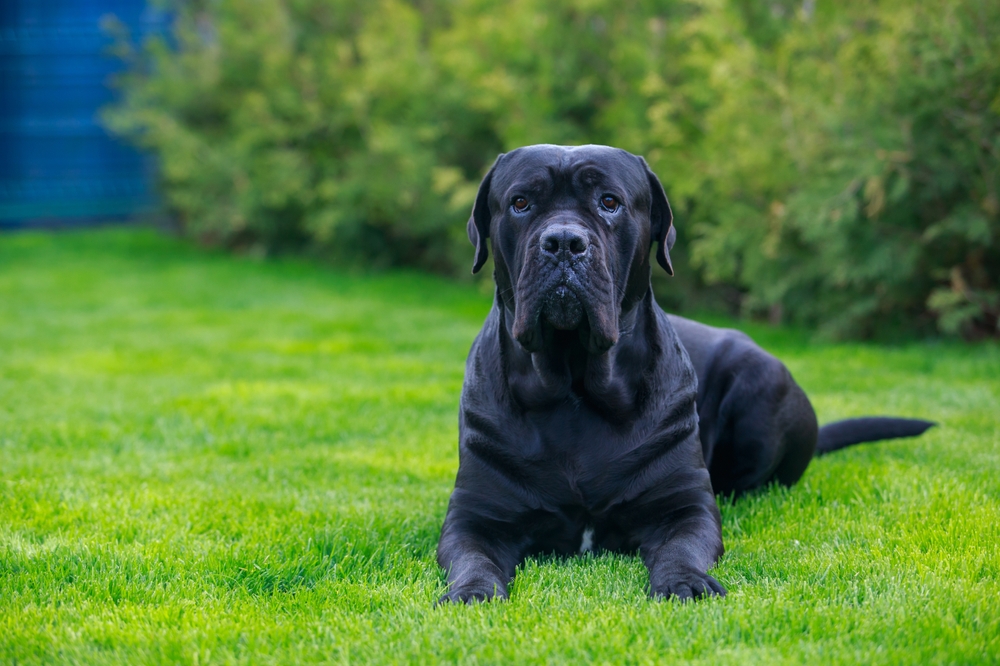
The Cane Corso is another large and intimidating-looking dog breed. It hails from Italy and is believed to have descended from Roman war dogs. They were used to round up cattle and to escort them to market and would have also been used to protect the livestock from large animals. Although the breed is a Mastiff, it tends to be more muscular than most. The Cane Corso fell out of favor somewhat with the mechanization of farming. But while the breed nearly became extinct in the 20th Century, efforts have been made, starting in the 1970s, to reinvent the breed and while still a rare breed, it has become more popular as a result of these efforts.
Physical Attributes
Although considerably smaller than the Boerboel, there is no doubting the size and physical prowess of the Cane Corso. It can weigh 110 pounds or more and it has a very muscular build, as well as a square jaw and loose jowls. Traditionally, the Cane Corso would have had its tails and ears docked to prevent injury. Naturally, it has quite small and pointed ears that do flop slightly and a long tail.
Personality / Character
The Cane Corso is also a breed that is not recommended for novice owners. It is a giant breed that loves a challenge. It will usually get along very well with family and friends but will need a lot of socialization and training to ensure that it doesn’t become wary or even aggressive toward strangers and other animals. The breed is intelligent, tends to be quiet and affectionate with family, and will benefit from being given work to do, as well as training and socialization.
Training
As with any breed, early socialization and training are important, but it is especially important with the Cane Corso. Enroll your dog in puppy classes when young. This will help teach them some basic commands and teach you how to train your dog and have them behave acceptably. It will also enable them to socialize with other dogs and people, and this socialization will need to continue outside classes. You should also consider some kind of canine sport or even herding for your Cane Corso. It will keep their mind engaged and give them something constructive to work on.

Health & Care
The Cane Corso is a rugged breed that tends to be quite hardy, but it is genetically predisposed to dysplasias, eye problems, mange, and bloat. Ensure that the parent dogs were screened for dysplasia and had eye screening conducted before they were bred. This can’t guarantee that your Corso will remain free of these problems, but it does help. Like the Boerboel, the Cane Corso’s coat is easy to manage but you will need to check ears for signs of infection and ensure that nails are trimmed and teeth are cleaned.
Suitable For:
Experienced owners looking for a loving dog that will require plenty of exercise and require training and socialization from a young age.
- Low-maintenance dog breed
- A skilled and keen working dog
- Typically very loving of family
- Big dog that can cause accidental injuries
- Requires a lot of training and socialization
- You may also be interested in: Cane Corso Boerboel Mix: Info, Pictures, Care & More

Which Breed Is Right for You?
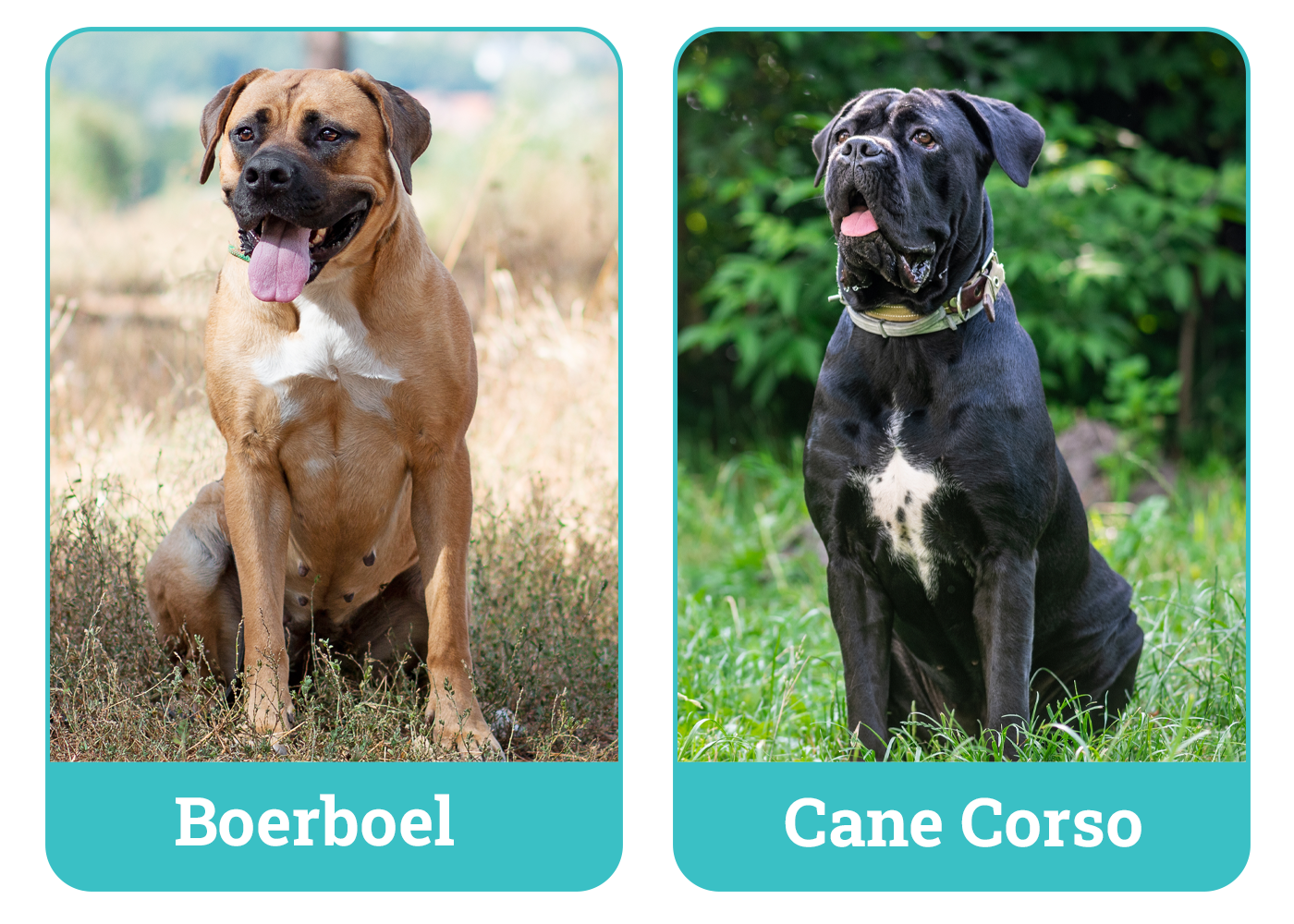
Boerboels and Cane Corsos are massive dog breeds and you do need to consider whether you have the room, time, and experience to take on either of these breeds. Both tend to be good with family but might be wary of other dogs, hence early socialization is so important. The Cane Corso is a big dog, but it is somewhat dwarfed by the size of the Boerboel, which will take up the entire sofa in most homes. These breeds are similar in their requirements, and it is likely the availability that will ultimately determine which breed is best for you, as long as you do meet the requirements of the breed. Both breeds are still quite rare, especially outside their home countries, so you will need to find specialist breeders.
Featured Image Credit: Dogster/Shutterstock
